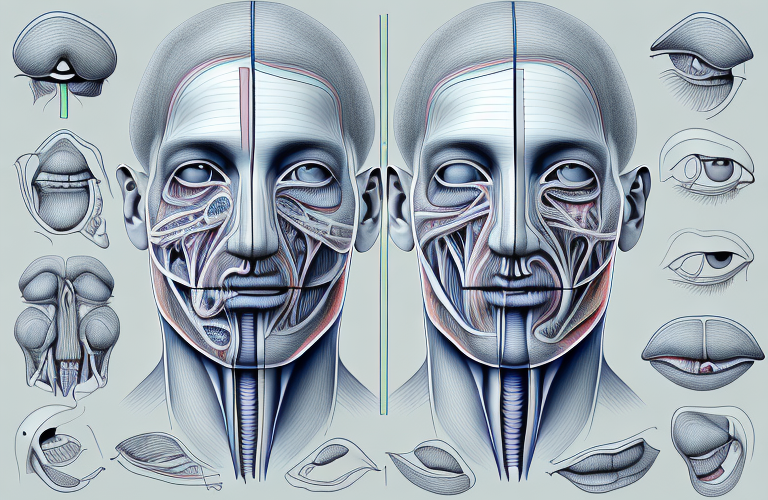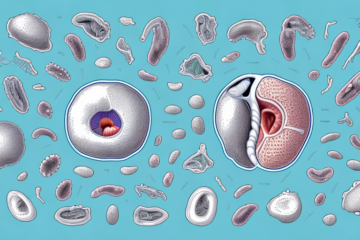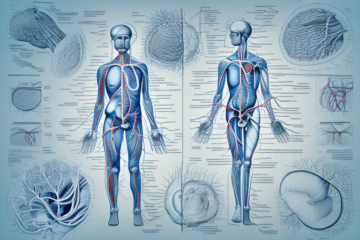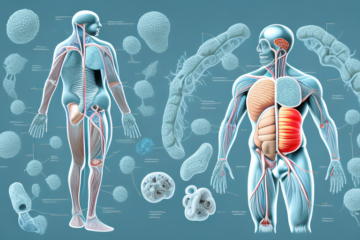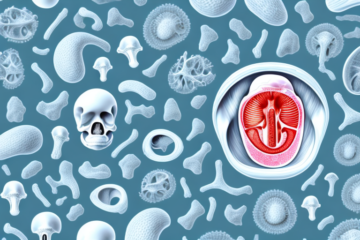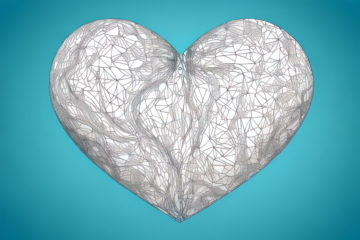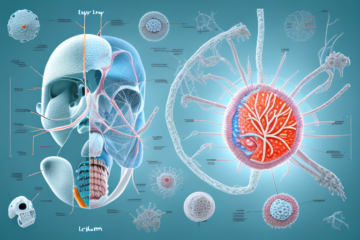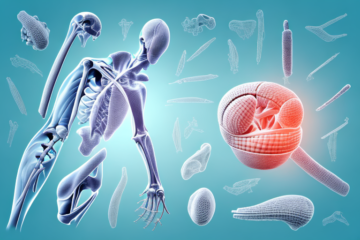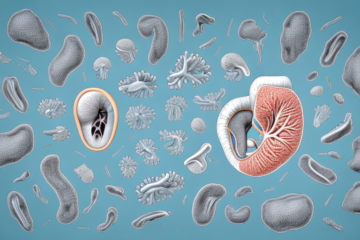The nose is the primary organ of the human respiratory system, responsible for breathing in oxygen and filtering out harmful particles from the air we breathe. In addition to its crucial role in respiration, the nose also plays a key role in our sense of smell, helping us detect and distinguish different odors. In this article, we explore the function and anatomy of the nose, common problems that can affect its health, and tips for maintaining proper nasal hygiene.
The Vital Role of the Nose in Breathing
The nose plays a vital role in breathing, serving as a passageway for air to enter our lungs. When we inhale, air flows through the nostrils and into the nasal cavity, where it is warmed, moistened, and filtered before it reaches the lungs. The nasal cavity is lined with tiny, hair-like structures called cilia, which help to trap and filter out dust, pollen, and other harmful particles from the air. This filtration process helps to protect the lungs from damage and disease.
In addition to its role in breathing, the nose also plays a crucial role in our sense of smell. The olfactory receptors in the nose are responsible for detecting and interpreting different scents, allowing us to enjoy the aroma of our favorite foods, perfumes, and flowers. Without our sense of smell, we would miss out on many of life’s pleasures.
However, the nose can also be a source of discomfort and health problems. Allergies, sinus infections, and other respiratory conditions can cause inflammation and congestion in the nasal passages, making it difficult to breathe and interfering with our sense of smell. It is important to take care of our noses by avoiding irritants, practicing good hygiene, and seeking medical attention when necessary.
The Anatomy of the Nose: Inside and Out
The nose is comprised of various structures, both inside and outside the body. The visible part of the nose, called the external nose or nasal dorsum, is made up of bone, cartilage, and skin. The internal nasal cavity, which is located inside the skull, is lined with mucous membranes and contains the nasal septum, a wall of bone and cartilage that separates the two nasal passages. The nasal conchae, or turbinates, are bony structures that project into the nasal cavity, helping to increase its surface area and improve air flow.
In addition to its structural components, the nose also plays an important role in our sense of smell. The olfactory epithelium, located in the upper part of the nasal cavity, contains specialized cells that detect and transmit information about different odors to the brain. The nose also helps to filter and humidify the air we breathe, as well as trap and remove harmful particles and bacteria. Overall, the anatomy of the nose is complex and multifaceted, serving both functional and sensory purposes.
How the Nose Filters and Cleanses the Air We Breathe
The nose has several mechanisms for filtering and cleansing the air we breathe. In addition to the cilia lining the nasal cavity, the nose also produces mucus, a thick, sticky substance that helps to trap and remove harmful particles from the air. The mucus and trapped particles are then either swallowed or expelled through the nose when we blow our noses. The nose also contains enzymes and antibodies that help to neutralize and destroy bacteria and other harmful microorganisms that may be present in the air.
Furthermore, the nose plays a crucial role in regulating the temperature and humidity of the air we breathe. As air passes through the nasal cavity, it is warmed and moistened by the blood vessels and mucus membranes lining the nose. This helps to prevent irritation and damage to the delicate tissues of the respiratory system. Additionally, the nose is responsible for detecting and processing different scents and odors, which can have a significant impact on our overall health and well-being.
The Sense of Smell: How the Nose Detects Scents
The sense of smell, also known as olfaction, is closely linked to the nose. Scents or odors are detected by specialized cells called olfactory receptor neurons, which are located in the lining of the nasal cavity. When these cells detect a scent molecule, they send a signal to the brain, which then interprets the smell.
Interestingly, humans can detect over 10,000 different scents. However, our sense of smell is not as strong as that of many animals, such as dogs and cats. These animals have a much larger number of olfactory receptor neurons, allowing them to detect scents that are much weaker and more distant than humans can.
Common Nose Problems: Causes, Symptoms, and Treatments
The nose can be prone to a variety of problems and conditions, ranging from minor annoyances to serious health issues. Some common nose problems include:
Allergic Rhinitis: Understanding Hay Fever and Other Allergies
Allergic rhinitis, also known as hay fever, is a common condition in which the immune system overreacts to allergens such as pollen, dust, or pet dander, causing symptoms like sneezing, runny nose, and itchy eyes. Treatment for allergic rhinitis may include antihistamines, nasal steroids, and avoidance of triggers.
Sinusitis: What It Is and How to Manage It
Sinusitis is a condition in which the sinuses, which are air-filled spaces in the skull, become inflamed and swollen. This can cause symptoms such as headache, facial pain, and congestion. Treatment for sinusitis may include antibiotics, decongestants, and nasal irrigation.
Nasal Polyps: Causes, Symptoms, and Treatment Options
Nasal polyps are non-cancerous growths that develop in the lining of the nasal cavity or sinuses. They can cause symptoms such as congestion, runny nose, and loss of sense of smell. Treatment for nasal polyps may include steroids, surgery, or both.
Deviated Septum: What You Need to Know
A deviated septum occurs when the nasal septum is uneven or shifted to one side, causing difficulty breathing, noisy breathing, and congestion. Treatment for a deviated septum may include medication or surgery.
Nosebleeds: Causes and Treatment
Nosebleeds, also known as epistaxis, can occur when the blood vessels in the nose become damaged or irritated. Common causes of nosebleeds include dry air, allergies, and nose picking. Treatment for nosebleeds may include applying pressure to the nose, using a nasal spray, or in severe cases, cauterization.
The Importance of Nasal Hygiene for a Healthy Nose
Proper nasal hygiene is essential for maintaining a healthy nose and preventing the buildup of harmful bacteria and other substances. Some tips for maintaining proper nasal hygiene include washing your hands frequently, using a saline nasal spray to clean and moisturize your nasal passages, avoiding smoking, and keeping your home clean and dust-free.
In addition to these tips, it is also important to avoid using harsh chemicals or irritants in your nasal passages, such as certain types of nasal sprays or cleaning products. These can cause irritation and inflammation, leading to further problems with your nasal health. It is always best to consult with a healthcare professional if you have any concerns or questions about proper nasal hygiene.
Cosmetic Procedures for the Nose: Rhinoplasty and More
Rhinoplasty, also known as a nose job, is a surgical procedure that can be performed for both functional and cosmetic reasons. The goal of rhinoplasty is to improve the appearance and function of the nose, and it may involve reshaping the nasal bones and cartilage, reducing the size of the nose, or correcting a deviated septum. Other cosmetic procedures for the nose include filler injections, which can be used to reshape the nose non-surgically.
Another cosmetic procedure for the nose is septoplasty, which is a surgical procedure that is performed to correct a deviated septum. A deviated septum can cause breathing difficulties and can also affect the appearance of the nose. Septoplasty involves straightening the septum to improve breathing and to enhance the appearance of the nose.
In addition to rhinoplasty and septoplasty, there are also non-surgical procedures that can be used to enhance the appearance of the nose. One such procedure is known as a liquid rhinoplasty, which involves the use of injectable fillers to reshape the nose. This procedure is less invasive than traditional rhinoplasty and can be used to correct minor imperfections in the nose.
The Link Between Smoking and Nasal Health
Smoking is known to be harmful to many parts of the body, including the nose. Smoking can damage the cilia in the nasal passages, reducing their ability to filter out harmful particles from the air. Smoking can also increase the risk of sinus infections and other respiratory problems.
In addition to damaging the cilia in the nasal passages, smoking can also cause inflammation and irritation of the nasal lining. This can lead to symptoms such as congestion, runny nose, and sneezing. These symptoms can be particularly bothersome for individuals with allergies or other respiratory conditions.
Furthermore, smoking can also increase the risk of developing nasal polyps, which are noncancerous growths that can obstruct the nasal passages and cause breathing difficulties. Nasal polyps can also lead to a loss of sense of smell and taste, which can greatly impact an individual’s quality of life.
Tips for Keeping Your Nose Healthy and Functioning Properly
Some tips for keeping your nose healthy and functioning properly include maintaining good nasal hygiene, avoiding smoking and exposure to secondhand smoke, getting regular exercise and staying hydrated, and seeking prompt medical attention if you experience any symptoms of nasal problems.
In conclusion, the nose plays a vital role in our respiratory system and sense of smell. Proper nose function and maintenance are crucial for overall health and well-being.
Another important tip for keeping your nose healthy is to avoid using nasal sprays or decongestants for extended periods of time, as they can cause damage to the nasal tissues and lead to chronic congestion. It is also important to protect your nose from environmental irritants, such as dust, pollen, and pollution, by wearing a mask or avoiding exposure whenever possible.

